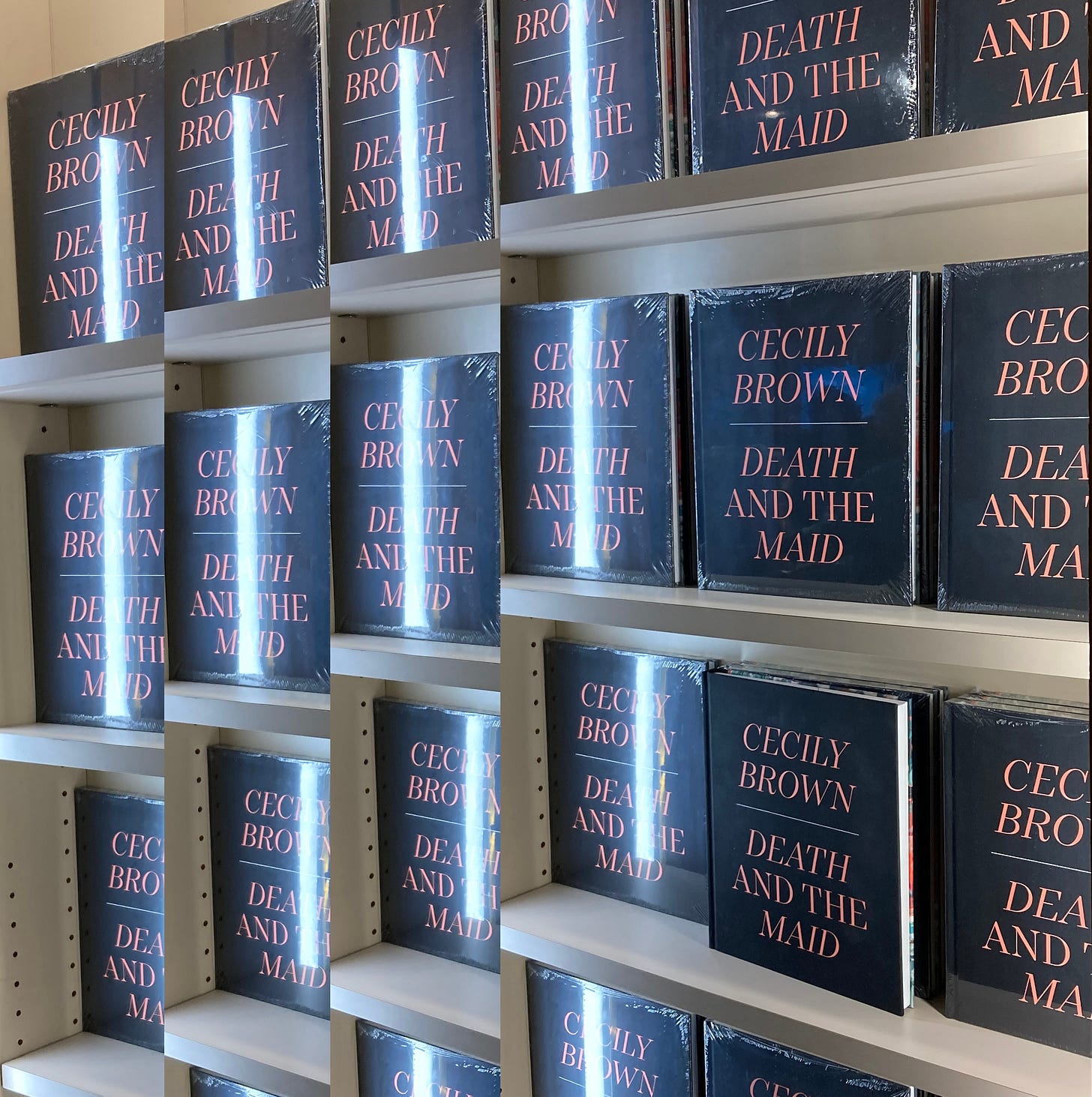Review: Cecily Brown: Death and the Maid. Metropolitan Museum of Art, April 4 through December 3rd, 2023.
Many more years ago than I care to remember, I moved back to Manhattan with artworld ambitions and a body of work. Through a friend I contacted a gallerist and brought in some woodcuts. Her response: “I’ve never seen anything like this before.” Far, far too late I realized that “never seen before” was the kiss of death.
In those days, if you were looking for a gallery you’d drop off slides of your work for review. It was a painful process because the slides cost a bundle and the preppies at the front desk were unfailingly patronizing. The point was to be instantly recognizable from a quick glance at a 24 by 36-millimeter piece of celluloid; it had to look like whatever art was selling, or expected to sell at that particular moment. Besides, no way a slide would show my textures, or incisions, or a piece of broccoli dipped in gesso, stuck and painted on a tempera panel to parody the trees in thirteenth-century Sienese paintings. Like an artworld Hercules at the Bivia I had a choice: either to fall in line and play the artworld game, or make art. I chose my path. Cecily Brown, I regret to say, chose hers, though “choosing” is too kind a word: Brown was born into the British culture crowd. I can’t imagine her turning in the wrong kind of slide at a gallery, ever, and it shows.
Because there’s nothing in her show at the Metropolitan Museum of Art that you couldn’t get from a reproduction, and that’s intended. Like a Rolling Stones concert, it’s not a show designed to introduce you to something new, it’s designed for those who are desperate for the cultural capital that comes from having seen the show. True, I didn’t notice any Cecily Brown T-shirts in the many Met gift shops, just hard-cover catalogs: this is not a show where you go to take selfies, it's a show where you go to complain about the kids taking selfies, though in fact, when I visited there were neither kids nor Karens: the visitors were mostly young sophisticates, art and art history students, looking disconcerted. Brown’s paintings are thick with painterly textures that in a reproduction might lead you to mistake them for, say, a de Kooning canvas, except these are not textures but reproductions of textures, like Lichtenstein’s fake brushwork minus the wit, the humor or the insight.
The art historian Ronald Paulson once wrote that what passes for art criticism among the British culturati is little more than upper-class name-dropping: “Here he has borrowed from Poussin! Here from Constable!” I found the same clichés in Roberta Smith’s craven review in the New York Times:
“She has borrowed Fragonard’s palette and the teeming crowd scenes of the Flemish master Pieter Bruegel the Elder and especially the fantastical creatures of Hieronymous [sic] Bosch. El Greco’s undulant line,” etc.1
Those are names familiar to most any undergraduate; but as Paulson warned, they aren’t influences, just wink-winks to you-know-who: a large-scale copy from Goya, photoshopped by hand; a painting that would refer to de Kooning if you thought de Kooning had painted recognizable images then slathered textures on top. I’m trying not to think of Edgar Degas’ misogynistic comment about a woman painter: that she made paintings the way others make hats. I’d like to believe he was referring to the uninspired drudgery he saw among those who made hats, or ironed clothes, or danced for the pleasure of dirty old men: those for whom painting, like marriage, was “an economic proposition.” The comparison’s applicable to Cecily Brown, not least for the gratuitous, unfulfilled claim to feminism behind this show. Not that I mind the feminism, only the manner in which it’s repressed, marginalized; the way it proclaims its powerlessness for the pleasure of dirty old art critics. The show is titled, without a hint of irony, “Death and the Maid.” It could as well have been “Death and the Au Pair.” Or “Death and the Nanny.” “Death and the Chaufeur.” Whatever.
WOID XXIII-11 April 23, 2023
Roberta Smith, "I Was Wrong About Cecily Brown," New York Times (April 13, 2023): https://www.nytimes.com/2023/04/13/arts/design/cecily-brown-metropolitan-museum-painter.html






Thanks for these insights, Paul. I was surprised she is having a solo show at the Met. I really enjoy the thick painterliness of her work and her aesthetic, and that's the thing that immediately draws me in.